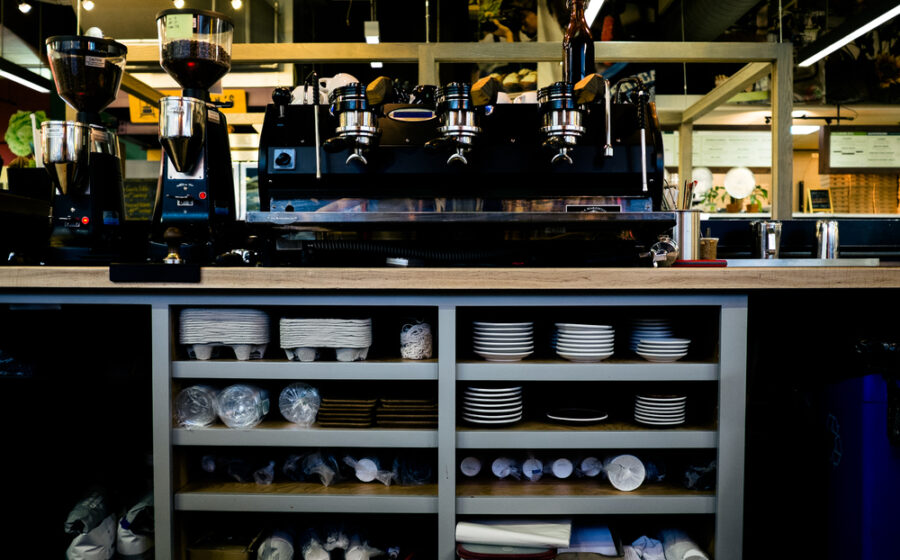[W]hen James and Miracle Yoder were invited by the city of Charlotte to see the space that would become 7th Street Public Market, they knew it was where they wanted to be. They’d started their coffee business, Not Just Coffee, in a tiny space, and after a year and a half they wanted more room. The building that houses 7th Street Public Market had been a grocery store and their café would occupy an old wine bar’s space, a square peninsula in the open-plan market.
With their funds still tied up in getting the business cranking, they moved straight in, doing almost no remodeling. It worked well at first. The peninsula provided ample countertop space and the area was big enough to allow five people to work a shift. As the market gained an audience—and how could a place filled with shops offering pizza, sushi, wine, crepes, confections, cheese, and plenty more not become popular?—Not Just Coffee’s lines got longer and the limits of using a wine bar as a café became clear.
There had been no clear POS location, which was great before the crowds arrived, but once they did, and the natural walk-up point at the bar was the espresso machine, it meant that a harried barista slinging shots for a line of tickets was the point person to greet customers. James says it became known as the “corner of death.” While the barista handled that double-duty, it was likely a coworker would need to access the fridge, which was directly under the espresso machine.
In March, after three and a half years working in the good-but-not-great setup, the Yoders remodeled their space. The walls of the peninsula stayed, getting new countertops made of ambrosia silver maple. The fridge was moved under the right-hand cabinet, making it accessible to the whole staff. The barista at the espresso machine now has a milk well sunk into the counter, which isn’t just good for workflow: it’s a back saver. A POS system (just out of frame on the right side) creates an obvious place to queue. Rearranging storage so trays and mugs for pour-overs are directly below the bar streamlined that station.
None of these were massive shifts, but added together they changed this compact space. “The workflow is so much better,” says James.
1. Double Mazzers: A Mazzer Kony holds single-origin beans from Counter Culture Coffee (the roast changes every couple of weeks) and a Mazzer Robur holds down the Hologram blend.
2. Modified Strada: Not Just Coffee had trouble with the groupheads failing on their La Marzocco Strada MP, so Counter Culture modified it to a semiautomatic EE. It’s worked perfectly.
3. Homeade Sauce: Chocolate sauce made with Sweetbird’s cocoa powder and a caramel sauce are crafted in house. Caramel lattes are the café’s number one drink.
4. Vanilla Lattes: Not Just Coffee makes its vanilla lattes with vanilla-bean-infused sugar. For a specialty drink, they added a mélange of autumnal spices to the sugar. The green powder is matcha from Rishi Tea.
5. Hidey-hole: A knockbox is built into the counter through which espresso pucks drop straight into a trash can and out of sight.
6. Two Scales: Every portafilter fill and shot that Not Just Coffee pulls is weighed. A Jennings CJ4000 weighs the grinds and an Acaia Lunar handles the shots.
7. Milk Well: Before their remodel, the baristas pulled milk from a fridge under the espresso machine. Cutting a well into the countertop allows better workflow and is less strenuous for baristas.
8. Long Fridge: The counter-length fridges hold milk, chai, cold brew, cold drink glasses, and kegs for nitrogenated cold brew, Lenny Boy kombucha, and soda water for craft sodas.
9. Copper Pour-over: While they use Kalita Waves and Chemexes, too, Not Just Coffee brews through Hario V60s on this custom-built pour-over rack.
10. Single Origins: A Mahlkönig EK 43 grinds the four single-origin coffees offered as pour-overs.
—Cory Eldridge is Fresh Cup’s editor.

















